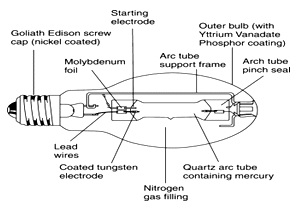Significance of Energy Efficient Component in the Buildings Design Towards the Green Footprint

DOI:
https://doi.org/10.54060/jmce.v2i1.17Keywords:
green building, thermal conditioning, day lighting, lighting systemsAbstract
The energy efficient building or green building design and certifications was started in the starting of twenty-first century because of whole world's people wants warmth, peace and prosperous house. Low energy consumption or energy efficiency is the main component of the green building. In this communication the author's communicating the significance of the possible methods of energy saving in building design by these methods peoples can improve the 'aura' of the building. By the application of these methods’ human can save lot of conventional energy and it say that it is sustainable approach for the building.
Downloads
References
A. Okeil, “Holistic approach to energy efficient building forms,” Energy and buildings, vol.42, no.9, pp.1437-1444, 2010.
S.C. Kaushik, S. Lal, “A Review on Solar Chimney Assisted Natural Ventilation System “, Cooling India Journal, vol.7, no. 10, pp. 38-46, Jan 2012.
W.L. Paul, P.A. Taylor, “A comparison of occupant comfort and satisfaction between a green building and a conventional building,” Building and Environment, vol.43, no.11, pp.1858-1870, 2008.
Y. J. Dai, K. Sumathy, R. Z. Wang et al., “Enhancement of natural ventilation in a solar house with a solar chimney and a solid adsorption cooling cavity, Solar Energy, “vol.74, no.1, pp.65–75,2003.
S. Lal, S.C. Kaushik, “CFD Simulation Studies on Integrated Approach of Solar Chimney and Earth Air Tunnel Heat Exchanger for Building Space Conditioning, “International Journal of Economy, Energy and Environment, vol.2, no.3, pp. 32-39, 2017.
S. Lal, S.C. Kaushik,” CFD simulation Studies on Integrated Approach of Solar Chimney and Borehole Heat Exchanger for Building Space Conditioning" Periodica Polytechnica Mechanical Engineering, vol.62, no.4, pp. 255-260, 2018.
G. Kanagaraj, A. Mahalingam,” Designing energy efficient commercial buildings-A systems framework,” Energy and build-ings, vol.43, no.9, pp.2329-2343, 2011.
P.F. de A.F. Tavares, A.M. de O.G. Martins,” Energy efficient building design using sensitivity analysis-a case study,” Energy and buildings, vol.39, no.1, pp.23-31, 2007.
P.E. Nilsson, S. Aronsson, L. Jagemar, “Energy efficient retrofitting of office buildings, Energy and buildings,” vol. 21, no.3, pp.175-185, 1994.
US Green Building Council. (2016, April 2). Benefits of Green Building [Online]. Available: https://www.usgbc.org/articles/benefits-green-building. retrieved on 10 March 2022.
Visual Dictionary Online. (2022, Jan. 1). Tungsten-Halogen Lamp [online]. Available: http://www.visualdictionaryonline.com/house/electricity/lighting/tungsten-halogen-lamp.php. retrieved on 10 March 2022.
N. K. Bansal, R. Mathur, M.S. Bhandari, “Solar chimney for enhanced stack ventilation, Building and Environment,” vol.28, no.3, pp.373-377, 1993.
G.S. Barozzi, M.S.E. Imbabi, E. Nobile, et al., “Physical and numerical modeling of a solar chimney – based ventilation system for buildings,” Building and Environment, vol. 27, no.4, pp.433-445, 1992.
J. Hirunlabh, W. Kongduang, P. Namprakai, et al., “Study of natural ventilation of houses by a metallic solar wall under tropical climate,” Renewable Energy, vol.18, no.1, pp.109–119, 1999.
S. Lal, S.C. Kaushik, P.K. Bhargava, et al., “Building Space Heating through Modified Trombe Wall: An experimental Study,” International conference on smart technologies for mechanical engineering, pp. 944-949, 2013.
J. Khedari, B. Boonsri, J. Hirunlabh, “Ventilation impact of a solar chimney on indoor temperature fluctuation and air change in a school building”, Energy and Buildings, vol. 32, no.1, pp.89–93, 2000.
K.S. Ong, “A mathematical model of a solar chimney,” Renewable Energy, vol.28, no.7, pp.1047-1060, 2003.
V.D. Hien and S. Chirarattananon,” Daylighting through light pipe for deep interior space of buildings with consideration of heat gain,” Asian journal of energy and environment, vol. 8, no.1, pp.461-175, 2007.
G. Sharan & R. Jadhav, “Performance of single pass earth-tube heat exchanger: An experimental study." Journal of Agri-cultural Engineering, vol.40, no.1, pp.1-8, 2003.
G. S. Kumar, S.C. Kaushik, “Theoretical Earth Temperature profile for different soils and soil conditions, “International Journal of Solar Energy, vol.17, no.4, pp. 199-209, 1995.
S.S. Bhardwaj, N.K. Bansal, “Temperature distribution inside ground for various surface conditions,” Building and Environ-ment, vol.16, no.3, pp.183-192, 1983.
N.K. Bansal & M.S. Sodha, “An earth-air tunnel system for cooling buildings,” Tunneling and Underground Space Technol-ogy, vol.1, no.2, pp.177–182, 1986.
A. Trombe, L. Serres, “Air-earth exchanger study in real site experimentation and simulation,” Energy and Buildings, vol.21, no.2, pp. 155–162, 1994.
R. Kumar, S. Ramesh, S.C. Kaushik, “Performance evaluation and energy conservation potential of earth–air–tunnel system coupled with non- air- conditioned building, “Building and Environment, vol.38, no.6, pp.807–813, 2003.
F. Al Ajmi, D.L. Loveday, V. L. Hanby, “The cooling potential of earth–air heat exchangers for domestic buildings in a desert climate,” Building & Environment, vol.41, no.3, pp.235-244, 2006.
S. Chandra, S.C. Kaushik, P.K. Bansal, “Thermal performance of a non-air-conditioned building for passive solar air-conditioned: Evaluation of roof cooling system,” Energy and buildings, vol. 8, no.1, pp.51-69, 1985.
J. Khedari, B. Boonsri, J. Hirunlabh. "Ventilation impact of a solar chimney on indoor temperature fluctuation and air change in a school building." Energy and buildings, vol.32, no.1, pp.89-93, 2000.
Shiv Lal, S.C. Kaushik, P.K. Bhargava, ” CFD Simulation Studies for Vertical Temperature Profile, Pitch Optimisation and Parametric Study of Borehole Heat Exchanger,” International Journal of Economy, Energy, Environment and Policy, vol. 2, no.2, pp.9-16, 2016.
B. Sanner,” Shallow geothermal energy,” GHC Bulletin, pp.19-25, 2001.
H. Zeng, N. Diao, Z. Fang, “Heat transfer analysis of borehole on vertical ground heat exchangers,” International journal of heat and mass transfer, vol. 46, no.23, pp. 4467-4481,2003.
M.H. Sharqawy, E.M. Mokheimer & H.M. Badr, “Effective pipe-to-borehole thermal resistance for vertical ground heat exchangers, “ Geothermics, vol. 38, no.2, pp.271-277, 2009.
S. Lal, N.B. Balam, & H.K. Jain,” Performance evaluation, energy conservation potential, and parametric study of borehole heat exchanger for space cooling in building,” Journal of renewable and sustainable energy (JRSE-AIP), vol. 6, no.2, pp. 1-12, 2014.
L. Shao, S.B. Riffat, W. Hicks et al., “A study of performance of light pipes under cloudy and sunny conditions in the UK,” Right Light, vol. 1, no.4, pp.155-159, 1997.
J.Y. Shin, G.Y. Yun, J.T. Kim, “Daylighting and energy performance prediction of a light pipe used in underground parking lots, “International symposium on sustainable health buildings SHB, vol.21, no.1, pp.277-282, 2011.
V.D. Hien, S. Chirarattananon, “Daylighting through light pipe for deep interior space of buildings with consideration of heat gain,” Asian journal of energy and environment, vol.8, no.1, pp.461-175, 2007.
X. Zhang, T. Muneer, “Mathematical model for the performance of light pipes,” Lighting Research and Technology, vol. 32, no.3, pp.141-146, 2000.
S. Lal, “Green Building Design Concept: A Sustainable Approach”, J. Mech. Constr. Eng., vol. 2, no. 1, pp. 1–10, Apr. 2022. DOI : https://doi.org/10.54060/JMCE/002.01.003
B. Wilhelm, P. Weckerle, W. Drust, “Increased illuminance at the workplace: Does it have advantages for daytime shifts?” Lighting research and technology, vol.43, no.2, pp.185-199, 2011.
Health and Safety executives. (2005, Mar. 1). Human factors: Lighting, thermal comfort, working space, noise and vibra-tion [Online]. Available: http://www.hse.gov.uk/humanfactors/topics/lighting.htm. retrieved on 10 March 2022.
A.F. Taylor, Illumination fundamentals, Lighting research center, Rensselaer 2000.
Visual Dictionary Online. (2022, Jan. 1). Tungsten-Halogen Lamp [online]. Available: http://www.visualdictionaryonline.com/house/electricity/lighting/tungsten-halogen-lamp.php. retrieved on 10 March 2022.
Lamptech. (2016, Mar. 25). The Mercury Vapour Lamp [online]. Available: http://www.lamptech.co.uk/Documents/M1%20Introduction.htm. retrieved on 10 March 2022.
Msscientific, Chromatographie-Handel GmbH. (2022, Jan. 1). Xenon Lamps - XBO Xenon Short-Arc Lamps from Osram [Online]. Available: http://www.msscientific.de/xenon_lamps.htm. retrieved on 10 March 2022.
Teri, The energy and resources institute. (2022, Jan. 1). Mission and Goals [Online]. Available: http://www.teriin.org/ResUpdate/reep/ch_4.pdf. retrieved on 10 March 2022.
A. Yadav and D. Ojha, “Architectural Drawing of G+10 Building By 3ds Max+V-Ray Lumion”, J. Mech. Constr. Eng., vol. 1, no. 2, pp. 1–11, Nov. 2021. DOI: https://doi.org/10.54060/JMCE/001.02.004
N.L. Panwar, “Performance evaluation of developed domestic cook stove,” Waste Biomass Valorization, vol.1, no.3, pp.309-314, 2010.
B.C. Wolverton, A. Johnson & K. Bounds, “Interior landscape plants for indoor air pollution abatement,” Final Report NASA. John C. Stennis Space Centre. pp. 21, Sep 1989.
S. Tomar, A. Singh Patel, D. Asthana, K. Banga, and A. Soam, “Statistical Analysis of Distress Management in Existing Build-ings”, J. Mech. Constr. Eng., vol. 1, no. 1, pp. 1–4, Apr. 2021. DOI: https://doi.org/10.54060/JMCE/001.01.005
R.A. Wood, R.L. Orwell & M.D. Burchett, “Study of absorption of VOC’s by commonly used indoor plants,” Indoor Air, vol.99, pp. 8-13, 1999.

Downloads
Published
How to Cite
CITATION COUNT
Issue
Section
License
Copyright (c) 2022 Dr. Shiv Lal

This work is licensed under a Creative Commons Attribution 4.0 International License.
























